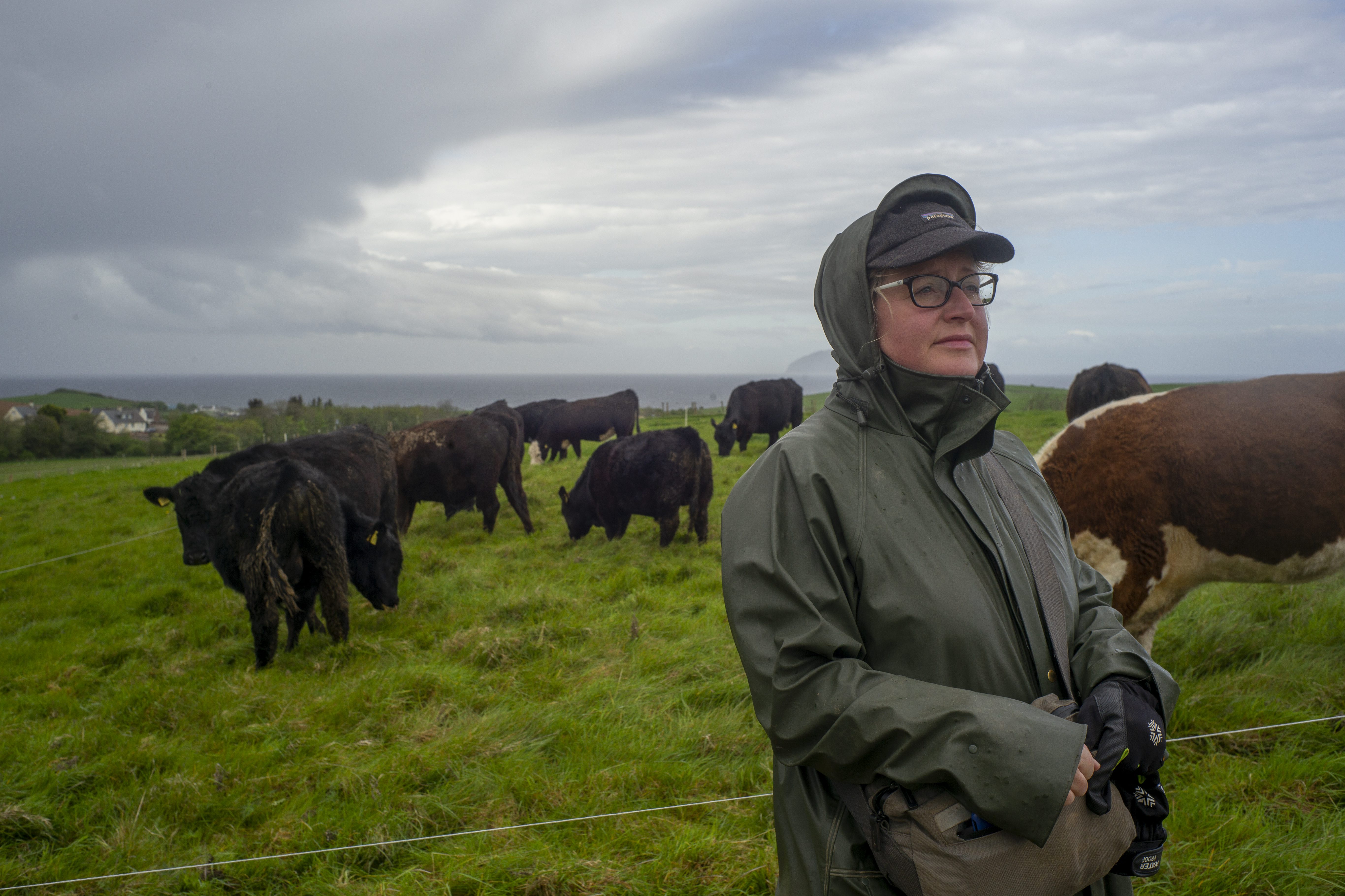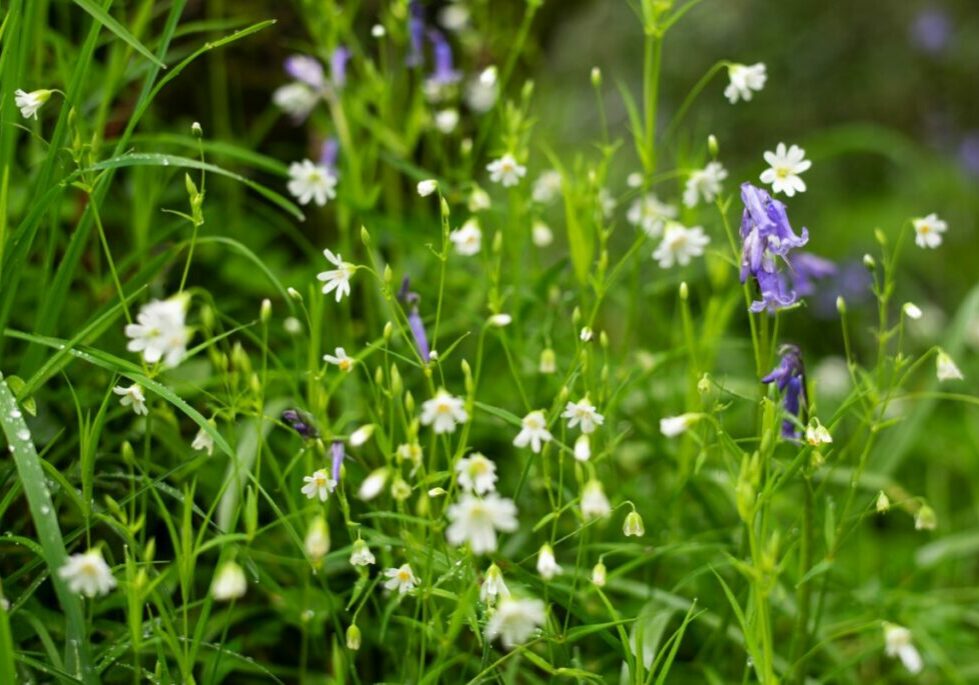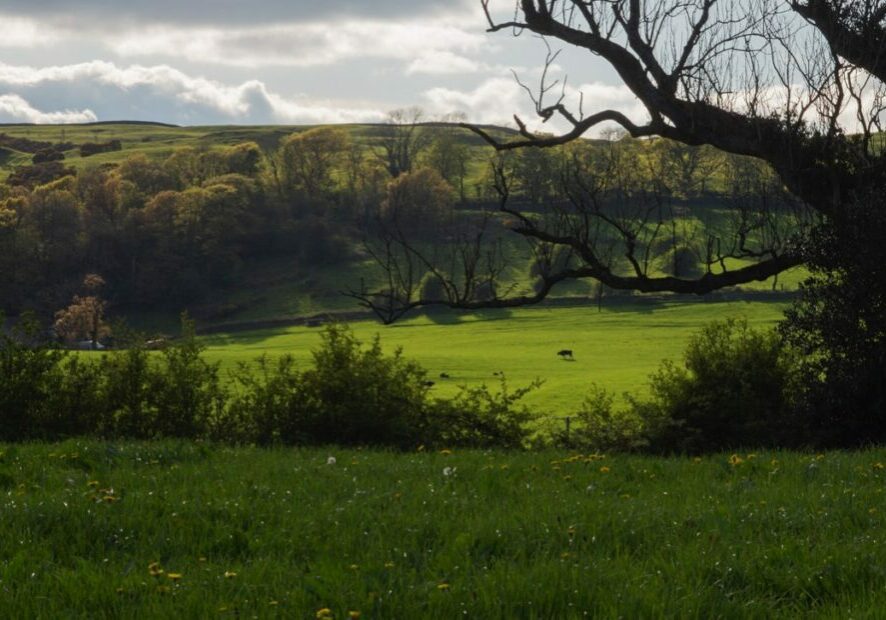In 2019, Heather Close joined her father, Philip, at 136-hectare Littleton Farm (marketed as Balsar Glen) in south-west Scotland, where he’s been raising beef cattle for about 20 years. Here, she explains why healthy soil is the basis for a healthy food chain.
“I think of regenerative agriculture as farming with nature – focusing on soil health, which builds healthy plants, which provides healthy food for our animals, which provide healthy, nutritious food for people,” says Heather.
“Something I had to get my head around at first was understanding that there’s no plan, no rule book. When you make a change to how you farm, you have to look at how nature reacts. That will tell you if it’s the right thing to do.
“The cows act as mobile biodigesters – they spread their dung, and that feeds the soil. We move them daily and they don’t return to that paddock for at least 30 days – by then the parasite risk is greatly reduced. Our cows haven’t needed treatment for worms for years. This means their dung is really healthy – a great habitat for beetles and other insects. So that helps with the nutrient recycling.

© DAVID BEBBER / WWF-UK
“Moving the cattle so frequently is labour intensive, but we use solar-powered automatic gates to help us. Allowing the grass to recover fully between grazings is vital. The depth of the grass root system is equivalent to the height of the grass above ground.
”The roots are the interface between the plant and the soil microbiology: the taller and healthier the plant grows, the more energy it makes from sunlight. It pushes some of that energy down into the soil and, in exchange, the bugs in the soil collect minerals for the plant. Everything is connected.
“In the hedgerows along the edges of our farm, the grass grows a metre tall, and the blades are as thick as two of my thumbs. One day, I’d love for that kind of grass to be all over the farm, building fertility for future generations – this farm should be far healthier in 100 years than it is today.
“For us, the benefits as a business are that we keep our costs low, we’re minimising risk from external markets, and we’re breeding resilience in our cows as well as our soil.
“Conventional farmers are farming how the government and the world has wanted them to since the Second World War: to feed the world. Hopefully regenerative agriculture can be a viable alternative – with slightly lower yields but at a level that can be maintained over decades – by delegating most of the work to nature. Our business model is to let nature do as much of the heavy lifting as possible, which helps the bottom line, because nature works for free.”
More to explore

Farming for nature
Decades of intensive agriculture have transformed the UK’s landscape. Our once-rich soils have been degraded, and wildlife and habitats have declined. So we’re backing farmers in a shift to restore nature and tackle climate change by repairing our broken food system

